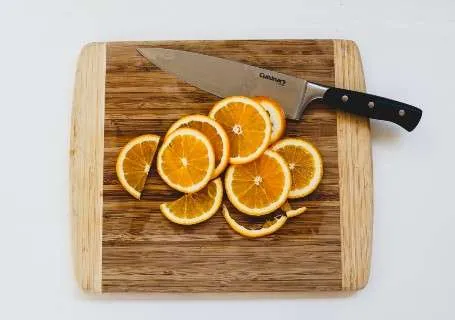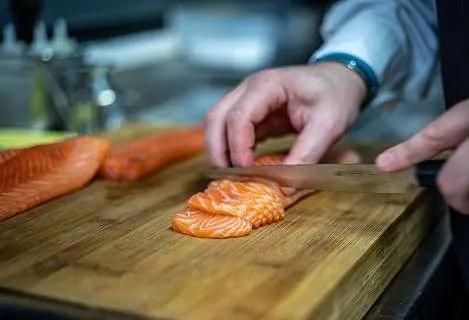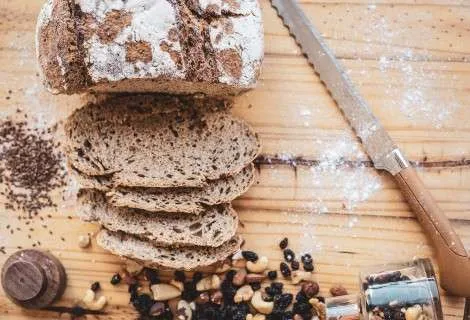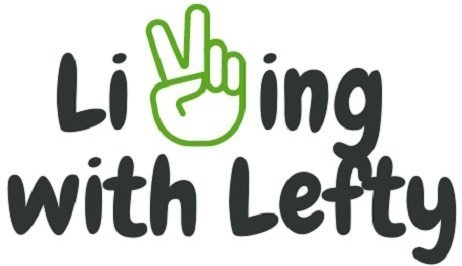There are several types of knives, each suited for specific tasks. If you want to master the art of using a knife, then you need to know the difference between them. There are folding knives, fixed blade knives, hunting knives, kitchen knives, etc. What is not often talked about is the fact that some knives are not made for both left and right-handers. But what is the difference between left and right handed knives? This article will go over how they differ from each other.
A knife blade has two edges: a sharp edge for cutting and a spine that’s on the top. You can rest the palm of your non-dominant hand on the spine to guide the blade while chopping, or rest the forefinger of your cutting hand on it for more control. The sharp edge can be ground in several different ways to make it symmetrical or asymmetrical, whether it is a serrated edge or straight edge.
Left-handers typically don’t have to worry about symmetrical blade knives, as these can be held in either hand to cut equally well unless the handle is asymmetrical. However, if the sharp edge is ground asymmetrically, that’s where lefties will run into trouble. This is a similar problem for left-handers using vegetable peelers because traditional ones only have a single sharpened blade to peel in one direction.
Table of Contents
What is a Left Handed Knife?
A left-handed knife is a knife a left-handed person can use to cut, slice, filet, and dice ingredients when prepping meals.
Not all knives are made equal, so there are some knives that lefties can’t use unless it is made specifically for left-handed chefs and cooks.
When it comes to left-handed knives, the main difference is between double-beveled and single-beveled blades.
Difference Between Left and Right Handed Knives
Double Beveled Vs. Single Beveled Blades
A double-bevel knife is a traditional Western knife. It is sometimes called a double-edged knife or an ambidextrous knife. A double-beveled blade can be used by both lefties and righties. The double bevel part refers to the blade that is angled on both sides, creating a sharp V. So the upper part of the knife is the spine and is flat and then the blade is ground to taper to an angle.
Double-bevel knives can be used for anything in the kitchen that doesn’t require delicate cuts or slices. Use a double-edged blade to cut poultry and meat, rough peel fruits and vegetables, and chop and dice meat, vegetables and fruit. You can use a double-bevel knife for the same purposes as a single-bevel knife; however, the slices and cuts won’t be as precise, especially with more delicate ingredients like raw fish.

Types of double-bevel knives are the Sujihiki (used for slicing any type of meat or seafood), Gyuto (a multipurpose chef knife), Santoku (also a multipurpose knife), and the Nakiri (used for cutting vegetables, especially Japanese vegetables that aren’t so delicate).
It is easier to sharpen double-bevel knives. The blade needs to be sharpened at an angle between 20 and 30 degrees. Sharpen your knife to around 30 degrees if you use it to cut dense meat produce and vegetables, as this ensures the blade is more durable. You should also, ideally, use a whetstone to sharpen a high-end double-edged knife. However, you may also use an electric knife sharpener for less expensive everyday kitchen knives.
A single-bevel knife, also called a single-edged knife or a chisel edge, is a traditional Japanese knife. A single-edged blade only has a bevel or angle on one side while the other side is flat. The beveled side may also be ground into a slight convex so it pushes the food away from the blade as you slice or filet.
The single side bevel ensures that when you cut down, any thin slice of food that’s cut away doesn’t become too thin towards the bottom due to the natural twist of your wrist. If you use this with the wrong hand, the cut slice will have an even more exaggerated thicker top and thinner bottom.
A right-handed single-bevel knife has the bevel on the right side, and these knives sometimes feature a handle that is made for right-handers. So as a lefty, you can’t use traditional single-beveled blades with the angle on the right. Instead, you need to ensure you buy a single-edged knife that is made for left-handers, and in this case, the bevel will be on the left.
Single-bevel knives are mostly used in Japanese cooking since the blades make precision cuts and slices. The single-edged blade lets the chef make wafer-thin, even, long, and unbroken cuts. When peeling daikon or cutting slices of sashimi, for example, it is important to make these kinds of cuts. With a double-bevel knife, it is difficult to get unbroken cuts. Think of left-handed vs right-handed scissors where if you use the wrong one, you won’t be able to make clean and fast cuts through paper.
These knives are ideal for cutting through “wet foods” like cheese, raw meat, fish, and soft vegetables. Chefs use these blades for cutting sashimi and sushi and making food art.

Types of single-bevel knives are the Yanagiba or Shobu and Takohiki (used for slicing sashimi and sushi), Usuba and Kamagata Usuba (a Japanese vegetable knife), and the Deba (a heavier blade, used for butchery).
Sharpening single-bevel knives is a skill that needs to be learned and cannot be done by knife sharpeners. The blade needs to be sharpened at a 15 to 17-degree angle only on one side and by using a whetstone or Japanese water stones.
Advantages of a Single Bevel Knife
- Ideal for cutting raw fish and soft ingredients like cheese.
- Blade is razor-sharp.
- Use for cutting delicate and decorative ingredients.
- The concave surface of the blade pushes food away, so it doesn’t stick to the knife.
Disadvantages of a Single Bevel Knife
- Lefties need a specific single-bevel knife made for left-hand users, which is difficult to find.
- Delicate blade, so can break or bend if you cut “tougher” ingredients.
- When you cut, the knife pulls toward the right (for right-handed single-bevel knives) or left (for left-handed single-edged knives), instead of straight down.
- Doesn’t retain its edge as long as a double-beveled blade.
- Not easy to sharpen; requires experience and learning.
Advantages of a Double Bevel Knife
- Easy to use.
- Versatile.
- Cuts straight down (doesn’t veer off to one side).
- Robust knife; retains its edge for longer.
- Easy to sharpen.
- Both right-handed and left-handed users can use a double-bevel knife.
Disadvantages of a Double Bevel Knife
- Food sticks to one side of the blade as you cut.
- Not as sharp as a single-edged blade.
- Makes less precise cuts and is not ideal for delicate ingredients.
Serrated Blades
A knife with a serrated blade is also called a classic bread knife. The blade of a bread knife isn’t smooth; instead, it resembles a saw with jagged edges. These edges are commonly called teeth.

The name “bread knife” gives you a clear clue as to what this knife can cut. You can use a serrated knife to cut slices from a loaf of bread, whether it is sourdough, wholewheat, or white. You can also use a serrated blade to cut a roast, a quiche, a whole chicken, and veggies, especially if the blade is sharp.
Traditional bread knives are serrated on the left side of the blade. If a right-handed person uses a bread knife and cuts a loaf, their bread slices will be cut straight down because of the clockwise-twisting action of the person’s wrist and hand as they slice through the loaf. If a left-hander uses a bread knife that’s serrated on the left, the bread slices will be thinner at the top and thicker at the bottom, so there’s a kind of “overhang” at the top of the remaining part of the loaf since they can’t slice straight down. It’s the same effect if the knife user cuts a roast or anything else.
As such, lefties need a bread knife that’s serrated on the right so they can also cut straight slices. The serration on the right prevents the twisting action, ensuring there are no “overhang” slices.
Asymmetrical Handles
The handle of a knife also makes a big difference for the user. Some knife handles are specifically shaped to be used by right-handed chefs, and holding one of these in your left hand will feel awkward and make the knife not very user-friendly.
Knives with symmetrical handles can be used by both right-handed and left-handed people. However, when it comes to asymmetrical handles, it depends on whom the knife is designed for.
The asymmetrical handle can have finger or thumb grooves or be shaped like a “D” with the curved part meant to fit snug inside the palm. Most of these handles will be ideal for right-handers but a few models are available for left-handers.
Conclusion
So while you need to look at the bevel of the blade before you buy a knife and make sure that if it’s a single-edged blade that it’s on the left side, you also need to look at the handle. For example, a double-bevel knife can be used by both lefties and righties, but if the handle is asymmetrical for a right-handed user, then a left-hander won’t be able to use the knife as easily.
